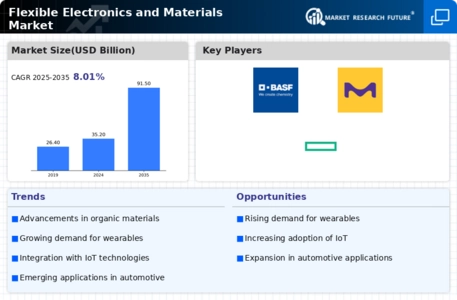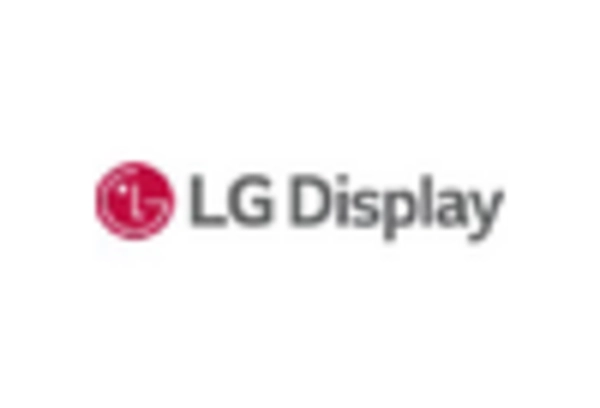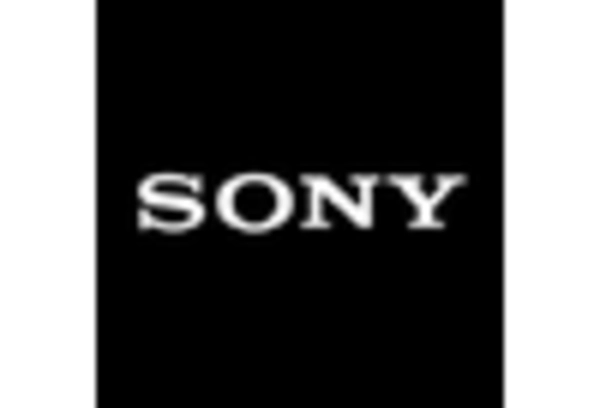The Flexible Electronics and Materials Market is currently characterized by a dynamic competitive landscape, driven by rapid technological advancements and increasing demand for lightweight, flexible devices across various sectors. Key players such as Samsung Electronics (South Korea), LG Display (South Korea), and Apple (United States) are at the forefront, focusing on innovation and strategic partnerships to enhance their market positions. Samsung Electronics (South Korea) emphasizes its commitment to research and development, particularly in organic light-emitting diode (OLED) technology, which is pivotal for flexible displays. Meanwhile, LG Display (South Korea) is leveraging its expertise in flexible display technology to cater to the growing demand for foldable smartphones and wearable devices, thereby solidifying its competitive edge. Apple (United States) continues to invest heavily in flexible materials for its product lines, indicating a strategic focus on integrating advanced materials into its devices to enhance user experience and functionality.
In terms of business tactics, companies are increasingly localizing manufacturing to mitigate supply chain disruptions and optimize operational efficiency. The market structure appears moderately fragmented, with several players vying for market share, yet the collective influence of major companies like Samsung Electronics (South Korea) and LG Display (South Korea) suggests a trend towards consolidation in certain segments. This competitive environment is further shaped by the strategic maneuvers of these key players, who are actively pursuing collaborations and technological advancements to maintain their market positions.
In August 2025, Samsung Electronics (South Korea) announced a partnership with a leading semiconductor manufacturer to develop next-generation flexible chips. This collaboration is expected to enhance the performance of flexible electronics, allowing for more sophisticated applications in consumer electronics and automotive sectors. The strategic importance of this move lies in its potential to position Samsung as a leader in the flexible electronics space, particularly as demand for high-performance, lightweight devices continues to rise.
In September 2025, LG Display (South Korea) unveiled its latest generation of flexible OLED panels, designed specifically for the automotive industry. This innovation not only showcases LG's commitment to expanding its product offerings but also highlights the growing trend of integrating flexible displays into vehicles, enhancing user interfaces and overall driving experience. The strategic significance of this development is profound, as it aligns with the automotive industry's shift towards more advanced, tech-driven solutions.
In October 2025, Apple (United States) revealed its plans to invest in a new facility dedicated to the research and development of flexible materials. This initiative underscores Apple's long-term vision of incorporating flexible technology into its product ecosystem, potentially revolutionizing the way consumers interact with their devices. The strategic implications of this investment are substantial, as it may lead to breakthroughs in product design and functionality, further differentiating Apple in a competitive market.
As of October 2025, the competitive trends within the Flexible Electronics and Materials Market are increasingly defined by digitalization, sustainability, and the integration of artificial intelligence. Strategic alliances are becoming more prevalent, as companies recognize the need to collaborate to drive innovation and meet evolving consumer demands. Looking ahead, it appears that competitive differentiation will increasingly hinge on technological advancements and supply chain reliability, rather than solely on price. This shift suggests a future where innovation and quality will be paramount in determining market leadership.
















Leave a Comment